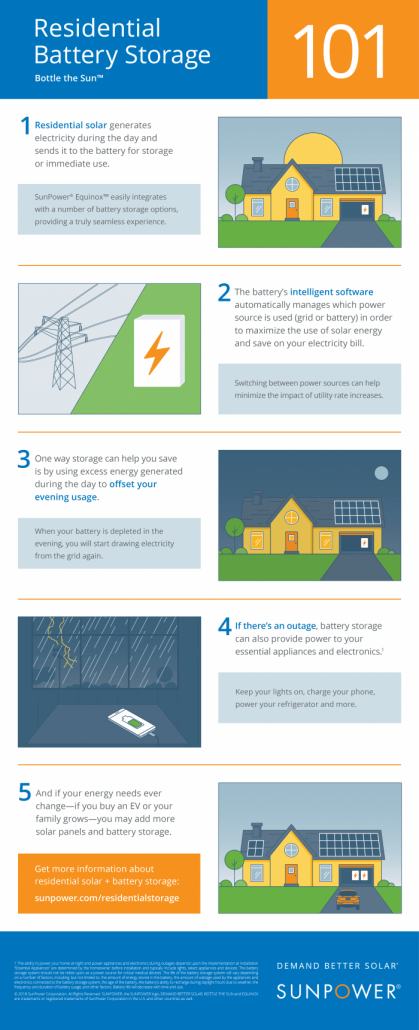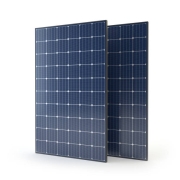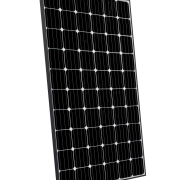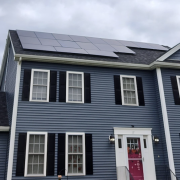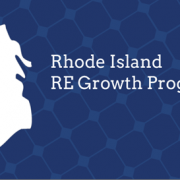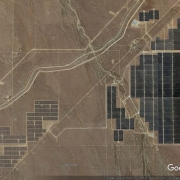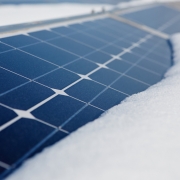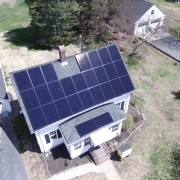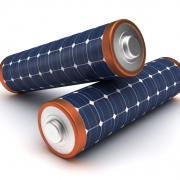Posts
Exploring Solar Panel Options
As we step into an era of sustainable living, the decision to adopt solar energy is not just about harnessing renewable power but also making a choice that profoundly impacts both the environment and homeowners’ finances. The right solar panel selection is crucial, serving as a gateway to a greener future and providing tangible economic benefits for those who embrace solar technology.
Environmental Benefits: Solar panels generate electricity by harnessing the sun’s energy, a process that produces no greenhouse gas emissions. Opting for solar power reduces reliance on fossil fuels, contributing to lower carbon footprints and mitigating the effects of climate change. By choosing the right solar panel, homeowners actively participate in the global effort to transition to cleaner, sustainable energy sources.
Economic Advantages: The economic benefits of solar energy extend beyond merely saving on electricity bills. Many governments and local authorities offer incentives, tax credits, or rebates to encourage solar adoption. Homeowners investing in solar panels can experience a significant reduction in their electricity costs over time, leading to substantial long-term savings. Additionally, the resale value of solar-equipped homes tends to be higher, attracting environmentally conscious buyers and positioning solar as a sound financial investment.
In essence, selecting the right solar panel isn’t just a choice for today; it’s a commitment to a more sustainable tomorrow and a strategic financial decision that empowers homeowners with both environmental stewardship and economic resilience.
Here at SGE Solar, we offer every product available on the market including QCells Q.Tron BLK, Maxeon, Rec Alpha Rec430 Pure R Series, Solaria Power X, Trina, Panasonic Panels, Silfab just to name a few. Contact us today to get a free quote for your home!
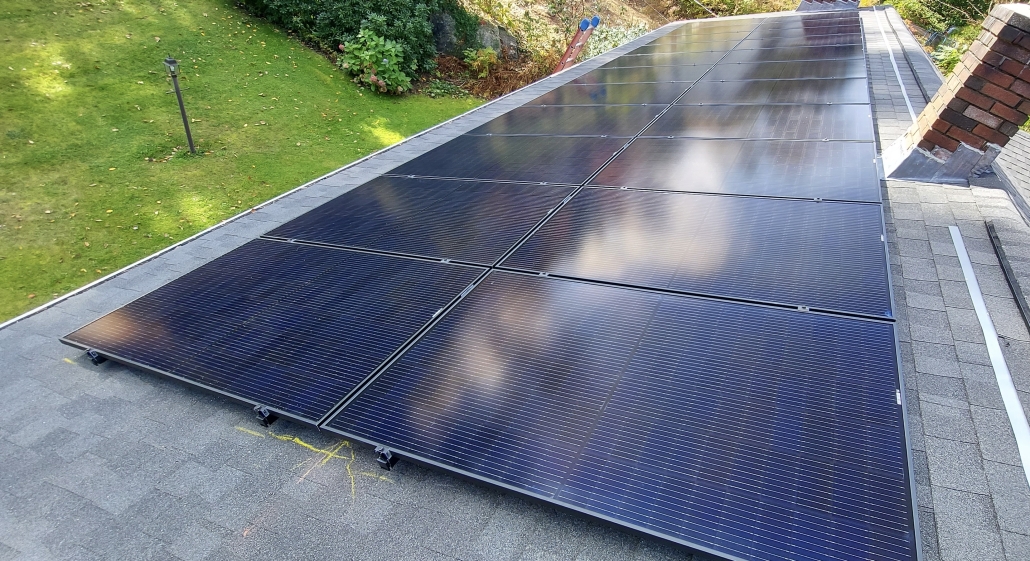
Harnessing Sunshine: SGE Solar Illuminates the Path to Sustainable Savings in Massachusetts, Rhode Island, and New Hampshire
In an era where environmental consciousness meets economic pragmatism, the quest for sustainable energy solutions has gained unprecedented momentum. Here at SGE Solar, we’re a full-turnkey installer dedicated to empowering homeowners in Massachusetts, Rhode Island, and New Hampshire to not only reduce their carbon footprint but also slash their high electric bills.
The Power of Solar Energy:
- As the demand for clean energy solutions rises, solar power has emerged as a beacon of hope for eco-conscious homeowners. SGE Solar leverages cutting-edge technology to harness the power of the sun, providing a renewable and sustainable energy source that not only benefits the environment but also significantly reduces dependence on traditional electricity grids.
- Full-Turnkey Installation:SGE Solar stands out as a full-turnkey installer, offering a seamless and hassle-free experience for homeowners looking to make the switch to solar energy. From the initial consultation to the final installation, SGE Solar takes care of every step in the process, ensuring that customers can make the transition to solar power with confidence and ease.
- Savings Beyond the Horizon:One of the most compelling reasons to choose SGE Solar is the substantial savings it offers on high electric bills. By tapping into the virtually limitless power of the sun, homeowners can experience a drastic reduction in their monthly energy costs. SGE Solar’s customized solutions are designed to maximize energy efficiency, providing homeowners with long-term financial benefits.
- Regional Focus: Massachusetts, Rhode Island, and New Hampshire:SGE Solar’s commitment to transforming the energy landscape extends to the residents of Massachusetts, Rhode Island, and New Hampshire. By catering to the unique needs and regulations of these regions, SGE Solar ensures that homeowners can navigate the process seamlessly, taking full advantage of the abundant solar resources available in the area.
- Federal Tax Credit: A Beacon of Financial Incentive:In addition to the inherent savings, homeowners opting for solar installations with SGE Solar can also benefit from the 30% Federal Tax Credit. This substantial financial incentive serves as a powerful motivator, making the transition to solar energy not only environmentally responsible but also economically advantageous.
- Environmental Impact and Sustainability:Beyond the immediate financial gains, embracing solar energy with SGE Solar contributes to a healthier planet. By reducing reliance on fossil fuels and decreasing carbon emissions, homeowners play a pivotal role in fostering a more sustainable future for generations to come.
SGE Solar’s dedication to making solar energy accessible and affordable for homeowners in Massachusetts, Rhode Island, and New Hampshire is paving the way for a greener and more economically sound future. With the added advantage of the 30% Federal Tax Credit, the journey towards sustainable living becomes not only responsible but also financially rewarding. As SGE Solar continues to illuminate homes with the power of the sun, it invites homeowners to join the solar revolution and be part of a brighter, cleaner, and more sustainable tomorrow.
Rhode Island Solar Growth Incentives
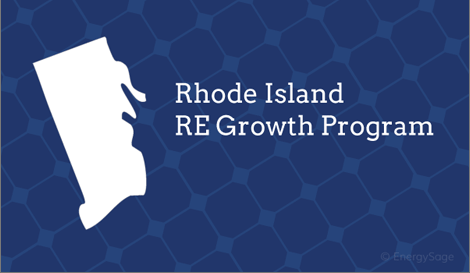
More people are deciding to go solar every year. Going solar will reduce or eliminate your electric bill, earn a good return for your investment, increase your property value, protect against rising energy costs, and protect the environment by cutting your consumption of non-renewable energy.
Second Generation Energy installs solar panels in Rhode Island and Massachusetts. If you live in Rhode Island, you have special solar incentives to go solar that a resident or commercial property manager can negotiate during the installation process. The Renewable Energy Fund (REF) Commercial Development Program offers a cash grant for homeowners and businesses that install renewable energy systems depending on the size of the system being installed. These grants can cover up to 30% of the installation costs. There are applications for commercial and residential projects on the Rhode Island Commerce website.
Net-metering is a regulatory policy for systems above MW in size that allows electricity users to gain credit for delivering extra electricity to the utility. Net-metering systems must be sized to meet the need of on-site loads, based on the three-year average of electricity consumption of the company. Virtual Net-Metering allows eligible customers to connect to an electric load that is not located on their property. Customers are eligible to up to 10 MW per project site. Customers of this program include state agencies, municipalities, public housing authorities, schools, non-profits, and more.
There are also incentives in Rhode Island for solar panels installations that are located on Brownfields sites, or sites in previously contaminated and in the process of remediation. In March 2019, the state designated $1 million for eligible sites. This funding comes from the state’s participation in the Regional Greenhouse Gas Initiative. Indeed, the state has been listening to concerned citizens and environmental advocates about encouraging more solar energy in the state.
Rhode Island offers the offers the Renewable Energy Growth program (REG), one of the most well-known solar incentive programs. It offers a fixed dollar-per-kilowatt hour payments for the energy you produce over a 20-year term. The owner of the system has agency in how the money is collected. The program is competitive however, though your solar installation company can help you through the process. REG solar systems do need to be installed within certain parameters to receive the correct amount of credits, so the solar installer will know how to properly set that up. Customers who would like to install more solar panels in addition to their preexisting panels can be enrolled in multiple credit programs. You can also use a meter that is set up on a site located away from the site that has the panels if that would be the best option. For example, for roadside-mountain meters instead of building-side mounted meters.
The Rhode Island Commercial Property Assessed Clean Energy Program (C-PACE) is a financing program for owners of commercial and industrial buildings for improvements on energy efficiency. It is designed to be self-sustaining, including applicants that cover the cost of sustaining the program, while administering development of energy technology that saved applicants money in turn. Applicants can work with many capital providers at competitive rates and repayment terms that are generally around 25 years, consistent with the lifeline of the improvements they make, like adding solar. The financing is assessed through municipal taxes and paid over the entire financing term. These owners will modernize their structures, bringing them into the 21st century. They will lower their long-term operational costs, increase building value, and most enjoy a positive cash utility flow! The C-PACE Program also creates more green jobs and advanced public policy to encourage more “green” infrastructure, reducing greenhouse gas use. One can also get involved with the C-PACE program from Massachusetts! Just speak with your local solar installation company search “C-PACE Program” in your area, and start making your company greener!
Solar Star
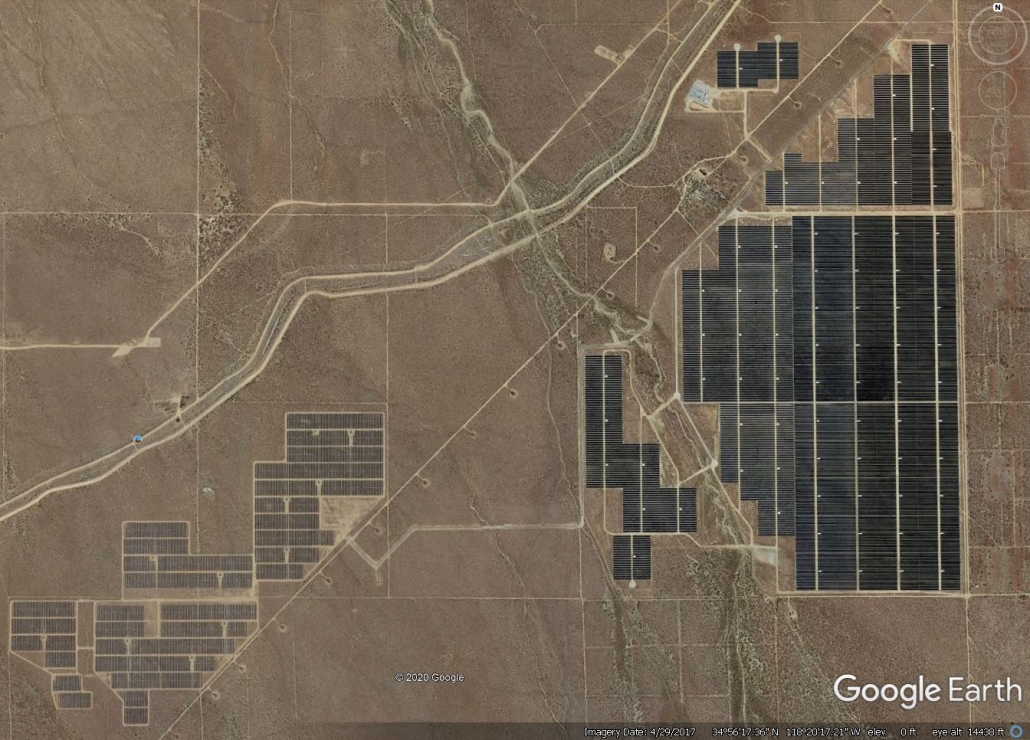
Solar Star farm in Kern County, California.
More people are deciding to go solar every year. Going solar will reduce or eliminate your electric bill, earn a good return for your investment, increase your property value, protect against rising energy costs, and protect the environment by cutting your consumption of non-renewable energy.
Sometimes solar panels can be truly awe-inspiring. In addition to community solar there are many enormous solar fields around the world, including Solar Star, America’s largest solar farm and the world’s largest when it was created in 2015. Solar Star spans over 13 kilometres squared, about four times the size of central park. It produces 579 megawatts of energy, and powers over 250,000 homes, and you can see it from hundreds of miles above the ground!
Located in Kern and Los Angeles counties in California, it was built on “disturbed” land, meaning land that was already altered by people and not in its natural state. These panels get cleaned in a way that uses minimal water, and automatically follow the sun’s motion across the sky, which makes them more efficient. According to Solstice, these panels impact the environment as if they took 108,000 cars off the road every year! Additionally, the project was reported to have created 650 jobs over three years, and 40 maintenance jobs through its lifetime. The panels are also a source of pride and leadership for the US renewable sector.
Mega-scale solar farms are becoming more common around the world. Since 2015, solar plants in Mexico, China, and India are all projected to reach a range of 1,000-2,000 megawatts soon. The UAE even plans on building a plant with 5,000 watts by 2030. Back in the US, there are other large fields too, like the Desert Sunlight and Topaz farms producing 550 megawatts each, but they take up more space. Solar energy is becoming more affordable for the average American to place on their properties and commercial buildings every year too. More efficient benefits of distributed energy generation and more resistance to outages for small-scale projects should keep getting better, making more numerous small-scale projects across our communities It brings more affordable energy to people across the country and thus helps us life more cheaply.
Still, we will keep our eyes out for updates on the production of these mega farms in the US and around the world. The solar industry creates many jobs for people for farms of all sizes and contributes to maintaining a clean planet and reduction in carbon emissions. The solar industry is growing exponentially, with an almost 200% increase between 2016 and 2017, and 2,056 megawatts of community solar has been installed in the US through 2019! It brings better energy to people across the country, including in Massachusetts, Rhode Island, and Connecticut, which Second Generation Energy serves.
Solar Efficiency in Cold Temperatures
Solar photovoltaic (PV) panels create energy from the sun’s radiation “sunrays” & not from the sun’s heat. A solar panel is made up of a layer of silicon cells and when light interacts with a silicon cell, it causes electrons to be set into motion, which initiates a flow of electric current.
When the sun is hitting a solar panel, the solar panel will generate electricity — no matter how cold it is. Most people don’t know that solar works more efficiently in colder temperatures. A sunny and cold environment in New England is the best condition for solar panels. Heat actually reduces solar efficiency (tests shown that panels start to lose efficiency above 77ºF).
Best example is the McMurdo Station, the primary hub for U.S. science operations on Antarctica, using solar as it’s critical source of power. Temperatures in outer space, where solar powers the International Space Station, experience the most extreme cold temperatures that are significantly colder than New England winters or even Antarctica’s tempatures!
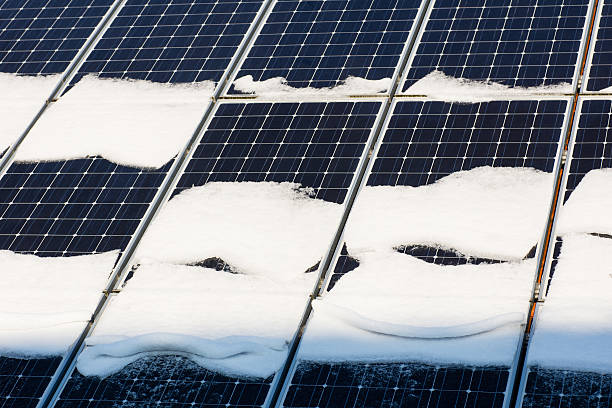
In fact, the solar industry is thriving in cold-weather states like here in Massachusetts (our main office location), Rhode Island and Connecticut.
This isn’t to say that solar is better or produces more energy during the winter months. Shorter days in winter, snow cover, clouds and a lower angle of the sun can all reduce the amount of sunlight solar panels get.
Do you live in Massachusetts, Rhode Island, or Connecticut and thinking about going Solar? Call our office today to speak to one of our Solar experts to see how much solar can save you!
Benefits of going Solar:
|
|
|
How Solar Works
Solar energy works by capturing the sun’s energy and turning it into electricity to your home or business.
Our sun is a natural nuclear reactor. It releases tiny packets of energy called photons. Every hour, enough photons impact our planet to generate enough solar energy to theoretically satisfy global energy needs for an entire year.
Solar technology is improving and the cost of going solar is affordable, so our ability to harness the sun’s abundance of energy is on the rise especially here in Massachusetts, Rhode Island and Connecticut.
A 2017 report from the International Energy Agency shows that solar has become the world’s fastest-growing source of power – marking the first time that solar energy’s growth has surpassed that of all other fuels. In the coming years, we will all be enjoying the benefits of solar-generated electricity in one way or another.
How Do Solar Panels Work?
When photons hit a solar cell, they knock electrons loose from their atoms. If conductors are attached to the positive and negative sides of a cell, it forms an electrical circuit. When electrons flow through such a circuit, they generate electricity. Multiple cells make up a solar panel, and multiple panels (modules) can be wired together to form a solar array. The more panels you can deploy, the more energy you can expect to generate.
What are Solar Panels Made of?
You’ll hear words like (PV) which stands for Photovoltaic solar panels which are made up of many solar cells. Solar cells are made of silicon, like semiconductors. They are constructed with a positive layer and a negative layer, which together create an electric field, just like in a battery.
How Do Solar Panels Generate Electricity?
PV solar panels generate direct current (DC) electricity. With DC electricity, electrons flow in one direction around a circuit.
With AC (alternating current) electricity, electrons are pushed and pulled, periodically reversing direction, much like the cylinder of a car’s engine. Generators create AC electricity when a coil of wire is spun next to a magnet. Many different energy sources can “turn the handle” of this generator, such as gas or diesel fuel, hydroelectricity, nuclear, coal, wind, or solar.
How Does a Solar Panel System Work?
Sunlight hits a solar panel on the roof, the panels convert the energy to DC current, which flows to an inverter. The inverter converts the electricity from DC to AC, which you can then use to power your home. It’s simple and clean, and it’s getting more efficient and affordable all the time.
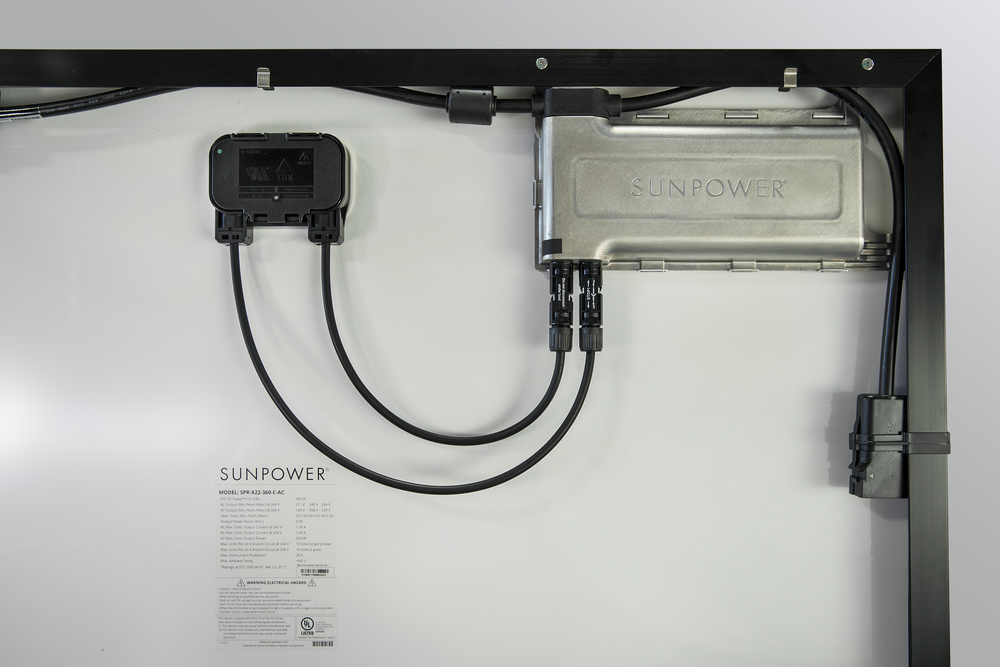
A typical grid-tied PV system, during peak daylight hours, frequently produces more energy than one customer needs, so that excess energy is fed back into the grid for use elsewhere. The customer gets credit/paid for the excess energy produced, and can use that credit to draw from the conventional grid at night or on cloudy days.
Contact SGE Solar if you have any questions about Solar and how you can benefit on reducing or eliminating your electric bill with the power of the sun!
How Home Solar Batteries Work
Solar energy system generates electricity whenever the sun is shining, often making more than a home needs during peak seasons. That excess energy is sent to the grid, and the homeowner usually receives a credit from their utility that can offset the electricity used at night.
While the grid still plays a supporting role, more homeowners are requesting solar-plus-storage so they can have more control over their electricity use.
Solar storage batteries work by taking that excess electricity and storing it. The stored solar energy can be used to complement power from the grid at night or to power essential appliances1 during a power outage. (Check out this battery storage infographic from Sun Power Below.)
Lithium ion home storage batteries usually come in a rectangular white box that’s about 4- to 5-feet high, 6 inches to a foot deep and about 2 feet wide. They are mounted in an out-of-the-way spot, such as a utility room or in the garage. The bigger the battery, the more power that can be stored. Any excess left over after the battery is charged flows back to the utility. See our Sonnen Battery Page for information or contact SGE to get a free no-obligation quote today!
